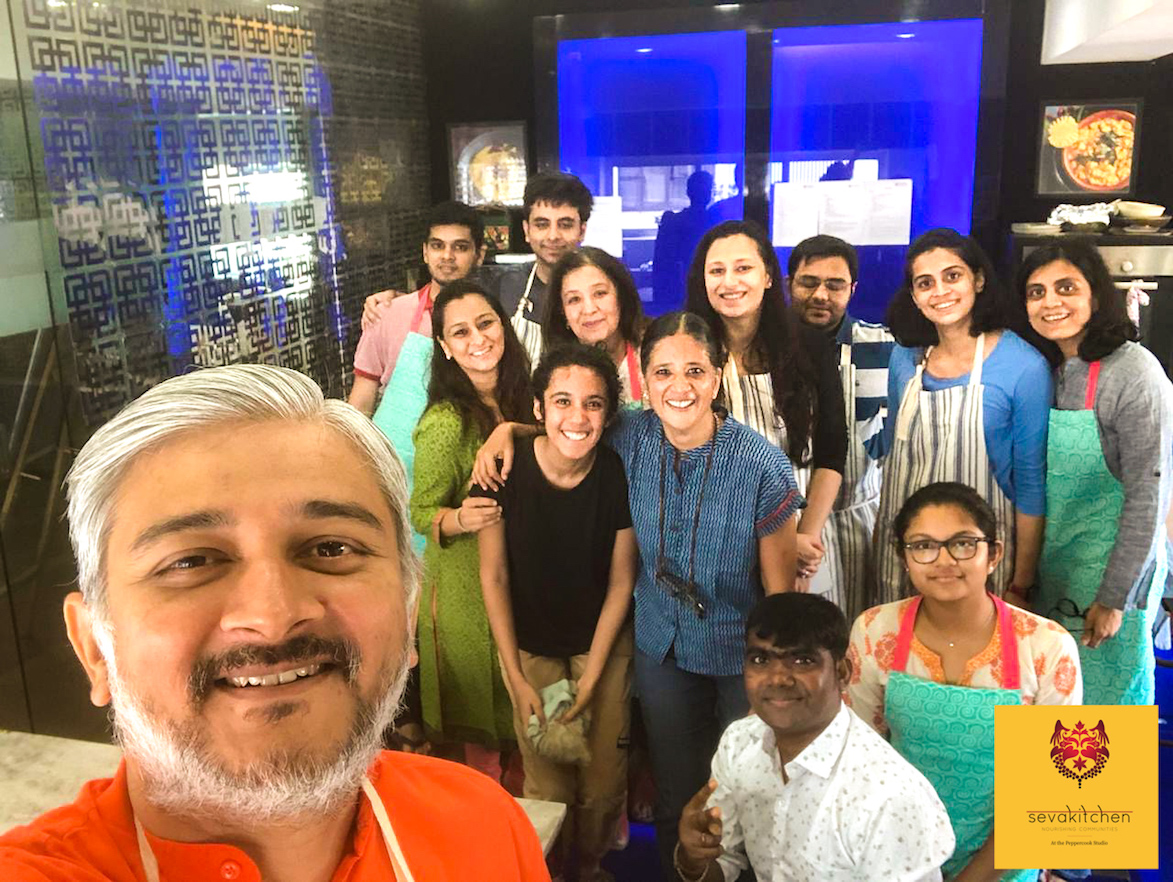
I’ve always wanted to run a soup kitchen, inspired by the langars (community free kitchens) serving meals at the Gurudwaras (Sikh places of worship) while growing up in the Philippines. Later in college, I spent several years working in a soup kitchen too.
The city of Mumbai needs community kitchens to serve the people who live on our streets. While my desire was to create a large space where people could come in and eat on tables with dignity, I knew I had to start somewhere small.
The second inspiration to start Seva Kitchen came from my study of the Bhagavad Geeta and Vedanta – Hindu philosophy based on the Vedas. Seva is a Sanskrit word that describes the act of selfless service. Seva is an act of compassion and care for others above oneself. Selfless service, common to most Indian religions, is a way to develop oneself spiritually.
My husband Ajay, fondly known as #hotnspicyhusband, encouraged me to follow through with this goal— “You have a kitchen, you have students and their parents, and friends, and unlimited spices. What are you waiting for?” So, with the lively assistance of my 2 student-interns Prisha Dani and Simren Bhinde, who enthusiastically took on the reigns of the project, we ran a trial run of our Seva Kitchen. Funded on a first run by my Mom to celebrate my late father’s birthday, our raw materials cost us just Rs. 700! We tied up with Food Service India for our spices and other food ingredients (include cake mixes) and Prisha fixed us with up with https://rotibankfoundation.org/ for distribution of food to children on the streets. From then on, I decided the kitchen would run two Thursdays a month to start.
On our first run, we managed to cook about 10 kilos of khichadi (rice with lentils and fresh veggies), 8 litres of channa (chickpea) curry and 65 pieces of vanilla sponge cake. In addition, we donated 60 bananas in case the Roti Bank team ran out of food.

In December, we tied up with Roti bank and Food Service India and ran a pre-Christmas “Cake and Cheer” campaign, where we fed 900 children who live in the slums of Trombay pao-bhaji buns (made of mashed vegetables) and vanilla cake, with a soft drink each. It was an emotional, eye-opening experience to see more than 900 mothers and children queuing up for such a small quantity of food! Each volunteer who attended was definitely affected by seeing this hunger first hand. While we were making just a small contribution, we all felt the need to continue this work.



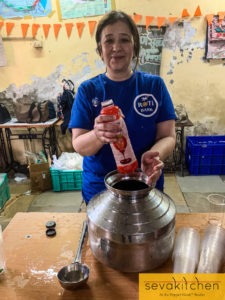
Since then we have had 8 to 10 volunteers a week, as well as a weekly sponsor. Our volunteers wash, chop, cook, clean and even sweep our floors! And at 12:15pm, Roti Bank drivers come and pick up our food. Then, they serve it to communities in need: (see pictures below)
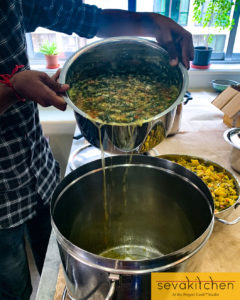
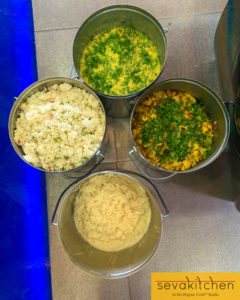
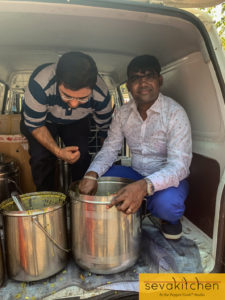
It has been four months since we started and I’m happy to say Seva Kitchen — run every Thursday morning for two hours at The Pepper Cook Studio in South Mumbai — has received tremendous support from the community. Our local vegetable vendor has been supplying us with discounted vegetables. Our tailor donates oil. Each volunteer who comes to cook brings along a donation. And people who we have never met have sent us everything from rice and lentils, to steel containers to cook and store our food! While we started out thinking we would cook for 25 children twice a month, we are now cooking for 100 children four times a month, and constantly trying to increase our output in our small kitchen studio on just four induction burners!


We have had volunteers from all walks of life! Students, potters, artists, at-home moms, doctors, teachers, engineers and even Swami Swatmanandaji from the Chinamaya Mission!
If you would like to do something similar, email me at anuja@thepeppercook.com! I am more than happy to help out in any way, including sharing recipes that serve 50 or sharing lists of not-for-profit organizations that will pick up food and deliver it to the needy.
Below is our recipe for vegetable and moong dal khichdi that we cook in batches to serve 25 people. It is loaded with the goodness of fresh veggies and protein from the lentils. And it is yummy enough to serve to. Houseful of guests. Because at Seva Kitchen we don’t just serve food to the most needy in our community, we serve good food!
Vegetables and Moog Dal Khichdi
Ingredients:
- 1 kg rice
- 2 ½ cup moong dal (about 500g), cleaned and washed
- 3” ginger, chopped fine
- 3 chilies, sliced into half
- 2-3 onions, thinly sliced
- 5 teaspoons cumin seeds
- 3 carrots (about 250g), finely chopped
- 2 potatoes (about 200g), finely chopped
- 2 cups French beans (about 250 g), finely chopped
- 2 cups peas
- 2 ½ teaspoons turmeric
- 5 teaspoons coriander powder
- 2 ½ teaspoons chili powder
- 20 cups water (5 liters)
- 5 teaspoons salt
- 8 tablespoons oil
Instructions:
- Soak rice and dal for ½ hour in separate bowls.
- Take a large steel pot add 12 cups of water. In another steel pot add 8 cups of water and bring water in both pots to a boil.
- Heat oil in a wok. Add ginger, chilies and sliced onions. Sauté until light brown, about 5 minutes.
- Add vegetables, spices and 2.5 teaspoons salt to onion mixture.
- Sauté vegetables, mixing spices well. Cook for about ten minutes until vegetables are half cooked though.
- Add the sautéed vegetables to the two pots of boiling water as per rice ratio (3:2).
- Drain rice and dal. Add 3/5 of rice to large pot and 2/5 to small pot. Similarly with dal, add 3/5 of dal to large pot and 2/5 to small pot.
- Add 1.5 teaspoons of salt to large pot and 1 teaspoon salt to small pot.
- Cook for 20-25 minutes.
Note: When cooking large quantities like this it is easier to divide the quantities of rice and dal before soaking. So if we divide the total quantity of 1 kg it comes to approximately 3 cups in one pot and 2 in another. Or if your pots are the same size you can save yourself a lot of hassle and divide everything in half! It won’t matter much if there are small differences in rice/dal/ vegetable quantities. But you do want to get the water right! A simple measure is use 4 times the quantity of rice in cups. The dal would be half the volume of rice in cups. Our quantities are divided for a large 4 later pot and a 3 liter pot.




